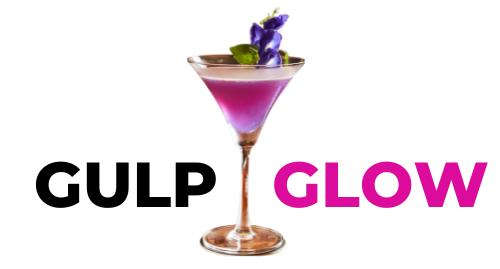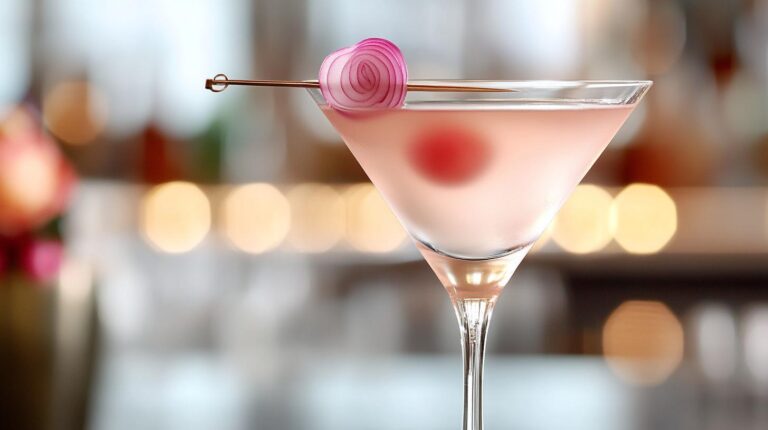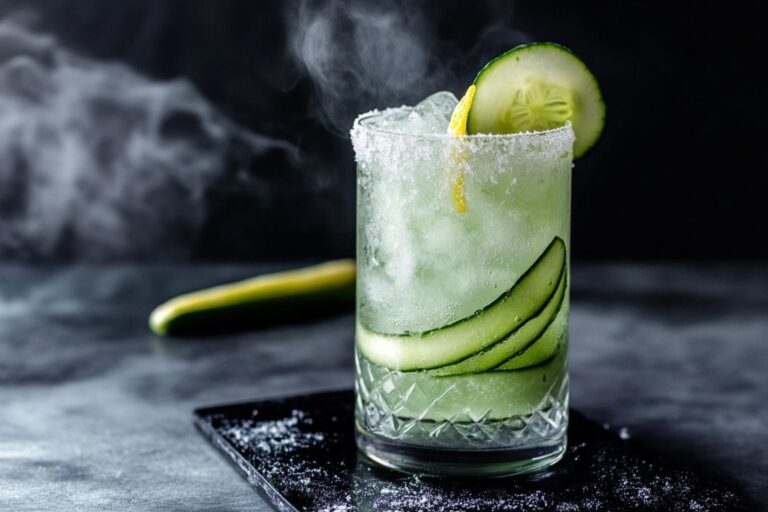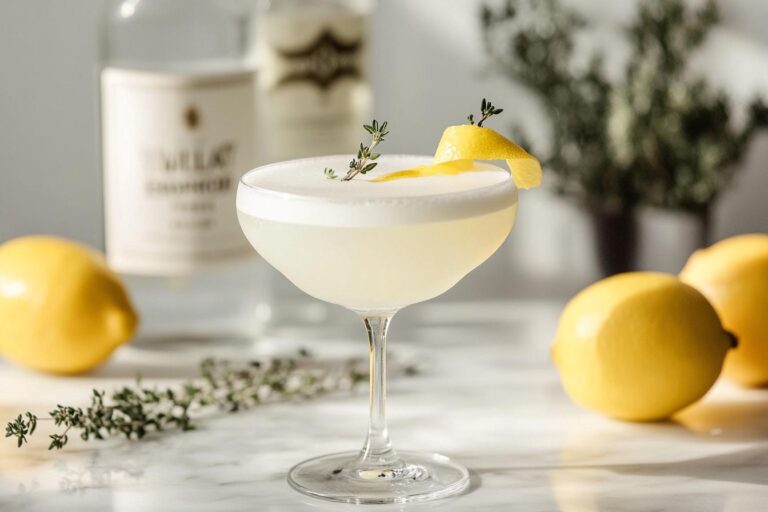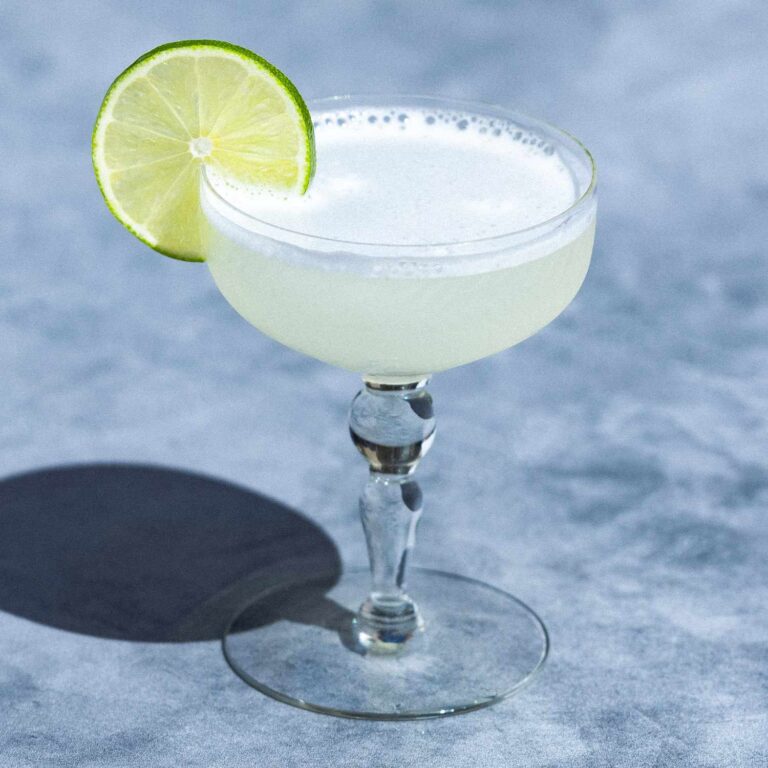Gin and Tonic: The Quintessential Refreshing Classic
The Gin and Tonic is the epitome of simplicity, elegance, and refreshment in the world of cocktails. It’s a timeless drink with a history that spans centuries, originally created for medicinal purposes and evolving into one of the most beloved cocktails globally. The beauty of the Gin and Tonic lies in its balance of botanical gin, bitter tonic water, and a bright twist of citrus. With endless variations and styles of gin to experiment with, this cocktail can range from crisp and dry to floral and citrusy.

This cocktail is perfect for almost any occasion, from casual gatherings to more formal affairs. The Gin and Tonic is a drink that allows the quality of each ingredient to shine, and with just a few simple steps, you can create a cocktail that is both refreshing and full of flavor.
Quick Facts: Gin and Tonic
Method: Built in the glass
Flavor profile: Crisp, refreshing, bitter, and botanical
How to serve it: Over ice
Glassware: Highball glass or large balloon glass
Alcohol content: ~ 12-15% ABV, depending on the gin-to-tonic ratio
Ingredients
The Gin and Tonic may be simple, but the quality of each ingredient is what makes this cocktail shine. Here’s what you’ll need:
- 2 oz Gin (Choose a high-quality gin with botanical, floral, or citrus notes—Hendrick’s, Tanqueray, or Bombay Sapphire are great choices)
- 4-6 oz Tonic water (Opt for premium tonic water with natural quinine, like Fever-Tree or Q Mixers, for the best flavor)
- Ice (For chilling and diluting the drink slightly)
- 1 Lime wedge or slice (Classic garnish that adds a burst of citrus)
- Optional: Lemon, cucumber, or herbs like rosemary or mint for alternative garnishes
Ingredient Notes:
The gin is the star of this cocktail, so it’s important to choose a gin that suits your taste. London Dry gins are juniper-forward and crisp, while gins like Hendrick’s offer a more floral profile with hints of cucumber and rose. The tonic water should be of the highest quality, as its bitter quinine flavor is what balances the gin’s botanicals. Fresh lime or lemon is the traditional garnish, but you can experiment with cucumber, herbs, or even grapefruit for unique twists.
Equipment Needed
To create the perfect Gin and Tonic, you don’t need much in terms of equipment, but having the right tools can elevate your drink:
- Highball glass or large balloon glass: The highball glass is traditional, but a balloon glass allows more room for the gin’s aromas to bloom.
- Jigger: For measuring the precise amount of gin and tonic.
- Bar spoon: For gently stirring the drink without losing carbonation.
- Citrus press or knife: To extract fresh lime or lemon juice for garnish.
Step-by-Step Instructions
Creating the perfect Gin and Tonic is more than just pouring ingredients together. Each step plays a role in balancing the flavors and creating a refreshing experience:
- Chill your glass: Before building the cocktail, chill your glass by placing it in the freezer for a few minutes or filling it with ice water while you prepare the ingredients. This keeps the drink colder for longer and enhances its crispness.
- Add the ice: Fill your glass with large ice cubes. Using large cubes slows the melting process and prevents the drink from becoming too diluted.
- Pour the gin: Measure out 2 oz of gin and pour it over the ice. Swirl the glass gently to coat the ice with gin and let the botanicals bloom as the spirit chills.
- Top with tonic water: Slowly pour in the tonic water, using about 4-6 oz, depending on your preferred strength. Tonic water should be poured over the back of a spoon or gently down the side of the glass to preserve its bubbles and effervescence.
- Garnish: Squeeze a wedge of lime into the drink for a burst of citrus, then drop it into the glass. Alternatively, you can garnish with a slice of cucumber for a more refreshing note, or a sprig of rosemary for added herbal complexity.
- Stir gently: Using a bar spoon, stir the cocktail gently once or twice to mix the gin and tonic while preserving the carbonation.
Gin and Tonic Recipe
Ingredients
2 oz Gin
4-6 oz Tonic water
Ice
1 Lime wedge (or other garnish)
Directions
- Fill a highball glass with ice.
- Pour in the gin and tonic water.
- Stir gently and garnish with a lime wedge.
Flavor Profile and Tasting Notes
The Gin and Tonic is a cocktail that offers a perfect balance of bitterness, herbal complexity, and refreshing brightness. The primary flavors come from the gin’s botanicals—often a mix of juniper, citrus, and herbs—which are enhanced by the crisp, slightly bitter tonic water.
The drink is light, effervescent, and dry, with the tonic’s quinine adding an earthy bitterness that balances the gin’s alcohol and botanicals. Each sip is refreshing, with a lingering, slightly bitter finish. The lime garnish adds a burst of acidity, lifting the overall flavor and providing a citrusy complement to the gin.
With different gins, the flavor profile can vary widely. A London Dry gin will give you a crisp, juniper-forward experience, while a more floral or citrus-forward gin like Hendrick’s or Tanqueray No. Ten can create a softer, more nuanced cocktail.
Garnishing and Presentation
A Gin and Tonic may seem simple, but the garnish is an essential part of the presentation and flavor experience. The traditional garnish is a wedge of lime, squeezed into the drink for a burst of citrus that cuts through the gin’s botanicals. However, the beauty of this cocktail lies in its versatility, and there are many ways to customize your garnish:
- Lime or Lemon: A classic garnish that adds a sharp citrus note to complement the gin.
- Cucumber: Particularly with floral gins like Hendrick’s, cucumber offers a refreshing, cooling contrast to the bitter tonic.
- Herbs: A sprig of rosemary, thyme, or mint can add an aromatic dimension, making the cocktail more herbaceous and complex.
- Grapefruit or Orange: For gins with citrus-forward profiles, adding a slice of grapefruit or orange can enhance the citrus notes and make the drink feel even fresher.
The glassware also plays a role in presentation. A large balloon glass allows the aromas to develop, while a highball keeps the drink sleek and refreshing. For an extra touch, consider freezing edible flowers or herbs into the ice cubes for a visually stunning effect.

Pairing Suggestions
The Gin and Tonic is a versatile cocktail that pairs beautifully with a variety of foods, thanks to its refreshing, slightly bitter profile. Here are a few pairing ideas:
- Seafood: The light, herbal nature of the Gin and Tonic pairs excellently with fresh seafood dishes like oysters, grilled shrimp, or ceviche. The citrus notes of the cocktail complement the briny flavors of seafood.
- Cheese boards: Serve your Gin and Tonic alongside a cheese platter featuring creamy cheeses like brie or goat cheese, balanced with salty crackers and fresh fruit.
- Salty snacks: The bitterness of the tonic water and the herbal gin pair beautifully with salty, savory snacks like olives, almonds, or roasted nuts. The salt enhances the cocktail’s flavors and keeps the palate refreshed.
- Sushi: The clean flavors of sushi, especially sashimi or cucumber rolls, pair well with a Gin and Tonic, highlighting the freshness of the gin’s botanicals.
Cocktail History and Trivia
The Gin and Tonic has a fascinating history that dates back to the 19th century, with origins in British colonial India. At the time, British soldiers stationed in India consumed quinine to prevent malaria. Quinine, which is extracted from the bark of the cinchona tree, was incredibly bitter, so they mixed it with soda water to make it more palatable. Adding gin became a natural progression, turning this medicinal concoction into a drink that was not only tolerable but refreshing and enjoyable.
The classic Gin and Tonic we know today has evolved from this historical combination, but tonic water still contains quinine, though at much lower levels. Over time, the cocktail became a staple of British drinking culture and spread around the world, appreciated for its simplicity, versatility, and refreshing character.
Serving Suggestions
The Gin and Tonic is perfect for any occasion, whether you’re relaxing on a sunny afternoon or hosting an elegant dinner party. Its light and refreshing nature make it ideal for casual gatherings, but it’s also sophisticated enough to serve as a pre-dinner aperitif.
For larger groups, consider setting up a Gin and Tonic Bar where guests can customize their own drinks. Offer a selection of gins, tonics, and garnishes like lime, cucumber, rosemary, and mint. Pre-chilling glasses and setting out large ice cubes or spherical ice will ensure each drink is perfectly crisp and cold.
This cocktail is best enjoyed fresh, so prepare it just before serving to maintain the carbonation and the bright flavors of the garnishes.
Alcohol Content and Alternatives
The Gin and Tonic typically has an ABV of around 12-15%, depending on the ratio of gin to tonic water. The gin is diluted by the tonic and ice, making this a relatively light and easy-drinking cocktail compared to stronger martinis or negronis.
For a lighter version, you can reduce the amount of gin and increase the tonic water for a milder drink. Alternatively, you can swap the gin for an alcohol-free botanical spirit, such as Seedlip, to create a non-alcoholic version that retains the herbal and citrusy notes of the original.
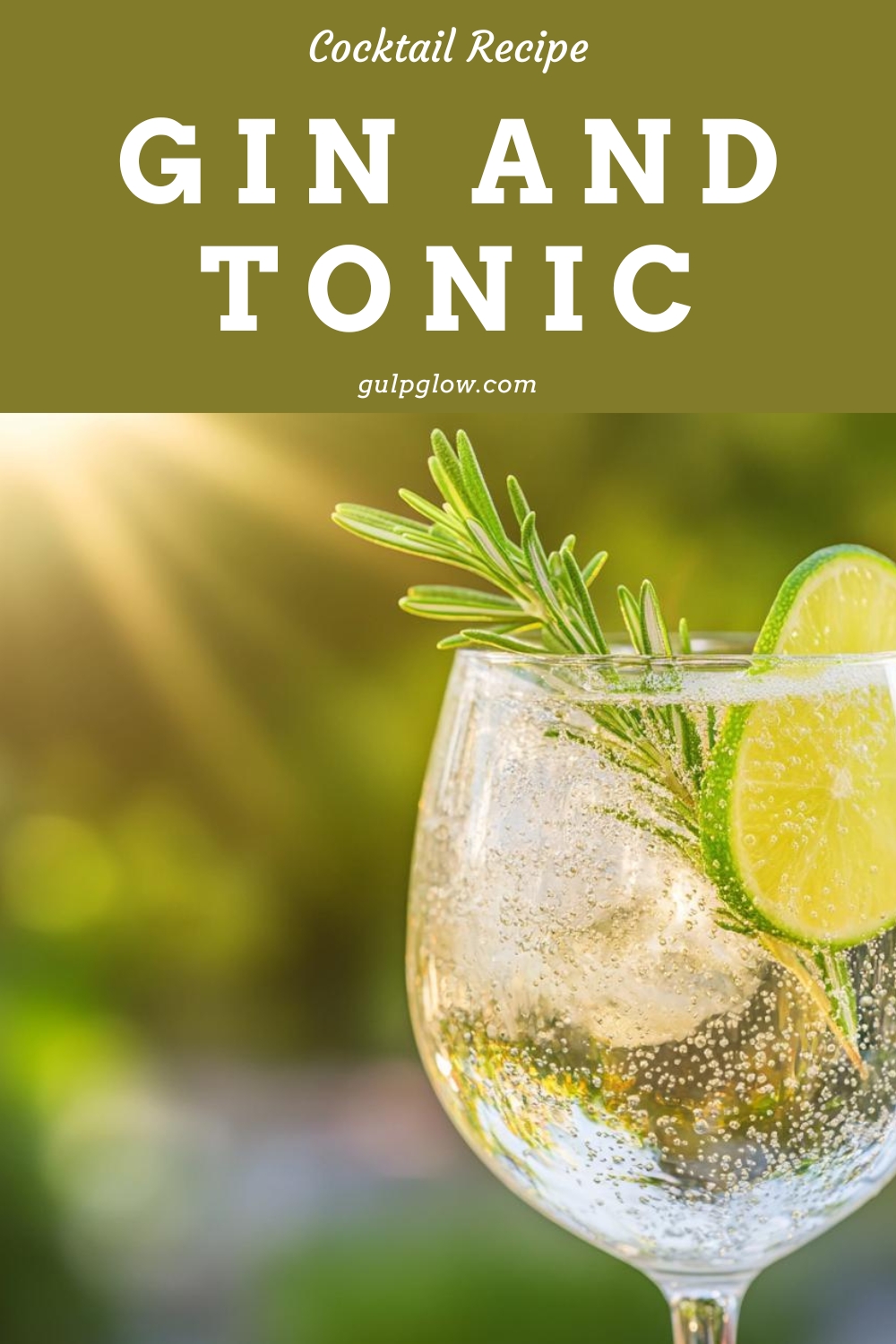
Frequently Asked Questions (FAQ)
What’s the best gin for a Gin and Tonic?
There’s no single “best” gin, but classic London Dry gins like Tanqueray, Bombay Sapphire, or Beefeater are excellent starting points. For something more floral, try Hendrick’s, or explore craft gins with unique botanicals for more adventurous flavors.
What’s the ideal gin-to-tonic ratio?
A 1:2 ratio of gin to tonic is a good starting point (2 oz gin to 4 oz tonic), but you can adjust it based on personal preference. If you prefer a stronger drink, reduce the amount of tonic water.
Can I make this with flavored tonic water?
Yes! Flavored tonics like elderflower, grapefruit, or Mediterranean can add unique twists to your Gin and Tonic. Just be mindful that flavored tonics can affect the balance, so choose ones that complement your gin.
Conclusion
The Gin and Tonic is a timeless cocktail that offers endless versatility, from the gin you choose to the garnishes you add. With its crisp, refreshing profile and perfect balance of botanicals and bitterness, it’s a cocktail that can be enjoyed anytime, anywhere. Whether you stick with the classic lime garnish or explore new flavor combinations, the Gin and Tonic is a drink that always delivers on refreshment and flavor.
